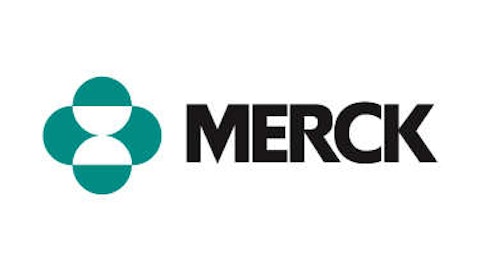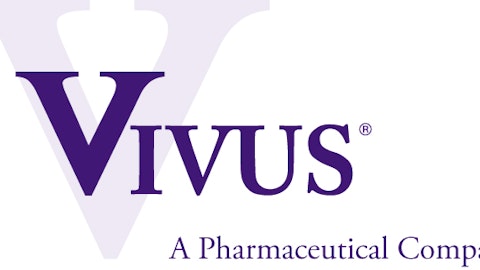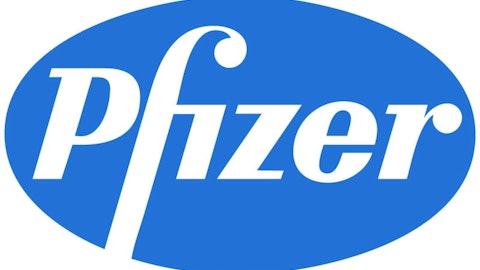Multiple sclerosis, or MS, is a terrible disease — but the market for MS therapies sure has gotten exciting recently.
Back in 2011, generic drug giant Teva Pharmaceutical Industries Ltd (ADR) (NYSE:TEVA) dominated the MS field, riding the coattails of its Copaxone medication to success. Since then, a whole lot has changed: With the advent of oral MS therapies, the market’s undergone a facelift. Companies pour resources into finding new therapies for a market predicted to swell to $14 billion by 2015. The question arises: Just which company is at the top of the MS market going forward?
Teva’s old reliable
Before we get too enthusiastic about new treatments, don’t sign off on Teva. Even with competition sprouting up all over the place, Copaxone still hasn’t relinquished a powerful hold on the industry.

However, even Teva’s cautious about Copaxone’s future. Teva’s head of global brands admitted last year that 2012 would likely see the height of the drug’s sales, projecting Copaxone’s revenue to fall to $2.7 billion by 2015, the year its patent expires. Teva’s therapy is already stalling in the U.S.: Copaxone recorded just 4% sales growth domestically in 2012, driven mostly by price increases. While sales outside the U.S. jumped significantly, international revenues make up only a little more than 25% of the drug’s total revenue.
Copaxone’s not doomed by any measure — as of the third quarter of 2012, the drug held a 40% market share in the U.S. — but it’s critical for investors to understand that it’s facing a long downslide in years ahead. With companies such as Mylan Inc. (NASDAQ:MYL) circling to launch generic competitors after Copaxone’s patent expires, 2016 could be a tough year for Teva investors.
So, just which products and companies are stepping in to fill the void?
Competitors abound
While oral therapies are the new face of MS medications, there are plenty of injectable medicines still vying for sales with Copaxone. Merck Serono and Pfizer Inc. (NYSE:PFE)‘s Rebif treatment continues to do well, recording sales of $670 million for the former in the third quarter of 2012. Pfizer reported Rebif growing in the U.S., a good sign for the product considering Copaxone’s domestic stall.
Biogen Idec Inc. (NASDAQ:BIIB) also markets successful injectable therapies. The company’s Avonex continues to be the best competitor to Copaxone, posting 2012 full-year sales of $2.9 billion — an 8% year-over-year growth. Biogen’s got a strong handle on the market, with fellow MS drug Tysabri posting 5% year-over-year sales growth to reach $1.1 billion in full-year revenue. Biogen managed to extend Avonex’s patent protection from its original expiration date this year all the way to 2026; however, that’s being challenged, and expect some Avonex sales to decline with the rise of oral therapies.
Gilenya, Novartis AG (ADR) (NYSE:NVS)‘ forerunner of the oral MS drug market, first rose to prominence with its FDA approval in late 2010. The drug’s had safety concerns since its launch — 11 patients died at one point, leading to an investigation eventually cleared up by regulators — but since then, Gilenya’s been on a roll. The drug hit blockbuster status for Novartis in 2012 with sales of $1.2 billion over the full year. Analysts expect peak sales from $2.1 billion all the way to $3.5 billion for the drug in coming years, with safety concerns weighing on the lower estimates. Still, expect Gilenya to be a major player in the MS market.
Sanofi SA (ADR) (NYSE:SNY)‘s Aubagio followed up with an FDA approval last year, but don’t expect such sky-high sales from this drug. The company priced Aubagio cheaper than competitors to undercut more expensive treatments such as Copaxone and Gilenya, but the drug never matched up to the efficacy of more potent rivals. Aubagio does have a safer profile going for it, however, and it could be useful for patients looking to avoid tough side effects. Peak sales estimates vary wildly, from conservative projections of around $350 million annually to more than $1.5 billion. Aubagio could one day hit blockbuster status, but don’t expect the world from Sanofi’s drug.
Biogen’s BG-12 could really set the bar high for oral medications, however. The drug’s still awaiting FDA approval, but BG-12’s efficacy makes this candidate look like a shoo-in to be given the green light. It also lacks many of the problematic side effects that have hurt Gilenya in the past, with a patent that doesn’t expire until 2019. Analysts peg peak sales around $3 billion; expect BG-12 to go toe-to-toe with Gilenya to rule the future of oral MS medications.
A crowded future
The traditional dominance of drugs like Avonex and Copaxone is coming to an end. While those drugs continue to crank out solid sales for Biogen and Teva, respectively, the rise of oral therapies and the surge of competitors into the MS market will put pressure on these tried-and-true staples of the industry. Biogen and Teva should make out fine — the former should only rise in the MS market with BG-12 — but the future of the industry has become a lot more crowded.
The article Which Company Will Rule This Multibillion-Dollar Market? originally appeared on Fool.com and is written by Dan Carroll.
Fool contributor Dan Carroll has no position in any stocks mentioned. The Motley Fool has no position in any of the stocks mentioned.
Copyright © 1995 – 2013 The Motley Fool, LLC. All rights reserved. The Motley Fool has a disclosure policy.




